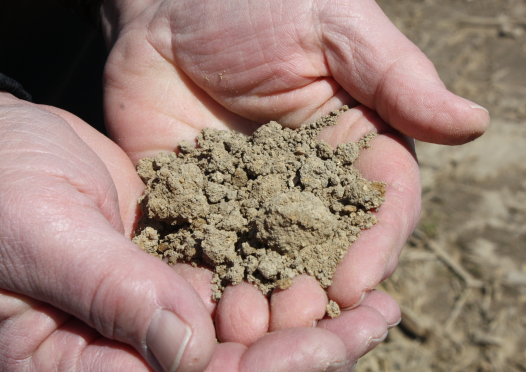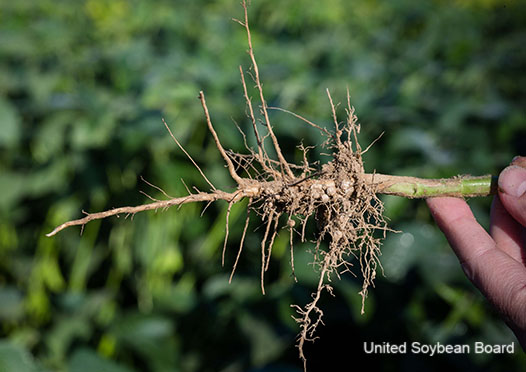ILSOYADVISOR POST
What Causes Yellowing in Beans
This was a year to see yellow soybeans in Illinois. There are a number of possible causes of this “symptom.” However before deciding the cause, take a close look at the symptoms and determine if the yellowing is on new foliage at the top of the plant or older foliage below, general leaf yellowing or interveinal (leaf tissue yellow and veins green) chlorosis. Before you attribute yellowing to nitrogen realize other factors can contribute to soybean yellowing.
Over the years I have seen a number of factors contribute to yellowing such as weather, soil compaction, saturated soils, soybean cyst nematode, root diseases and iron chlorosis. All of these can restrict root development, reduce growth and cause yellowing.
A severe soybean cyst nematode infestation stunts the plant and causes yellowing. Plants may recover to a degree if the weather and soil conditions return to normal, or the plants may remain stunted and yellow through the season.
Hail can defoliate soybeans and a lack of leaf area means less photosynthesis, which reduces the food supply to roots and nodules. If enough foliage is lost the plant can’t provide enough food for the rhizobia on the roots, nodules will slough off or become inactive. If this happens, the plants become nitrogen deficient. Plants will recover as regrowth progresses and more sugar is translocated to the nodules.
Iron chlorosis isn’t common in Illinois since it is primarily attribute to iron deficiencies associated with high pH and calcareous soils. But it appears in some spots in a field, similar in size to drown out spots. Saturated soils can cause temporary iron chlorosis and more serious in soils with alkaline pH. Excess salts like nitrate can exacerbate chlorosis symptoms during early soybean growth. Iron chlorosis is normally an early-season problem, and as roots develop and occupy more soil volume, symptoms disappear. Chlorosis appears early as interveinal (between veins) chlorosis while veins remain green.
Potassium deficiency occurs later in the season and begins at the leaf margins and then progresses inward. Both the tissue and veins turn yellow while the base of the leaf remains green. Symptoms will fade with improved soil conditions that allow good root growth and access more available potassium. Potassium deficiency can be caused by soil compaction.
Nitrogen deficiencies can be due to lack of a viable population of bacteria in the soil after an extended drought, or if soybeans haven’t been planted for five or more years. Virgin fields may lack an active population of viable rhizobia bacteria, or heat and drought (think back to 2012) can reduce the population in a hot and dry season. If nodules aren’t found, make a rescue application of 90 to 120 pounds of nitrogen per acre.
In cool and wet seasons there will be reduced nitrogen fixation due to lack of nodule development or lack of oxygen to support bacterial activity in the nodules. In June 2014 soils were cool and damp and nitrogen fixation was slow to kick in. In 2015 soils were damp again into July and nitrogen fixation kicked in later. As the soils dry out, nodule-forming bacteria go to work and deficiency symptoms disappear. With nitrogen deficiency, it is lower leaves that are chlorotic or pale green first and all new nitrogen goes to support next growth.
Remember before assigning a cause for chlorosis, consider the symptoms and environment as you reach a conclusion.
Agronomist Dr. Daniel Davidson posts blogs on agronomy-related topics. Feel free to contact him at djdavidson@agwrite.com or by leaving a comment below.





Comments
Add new comment